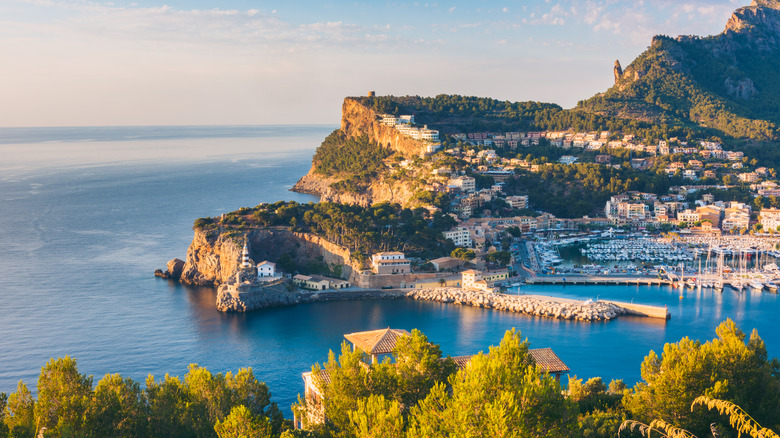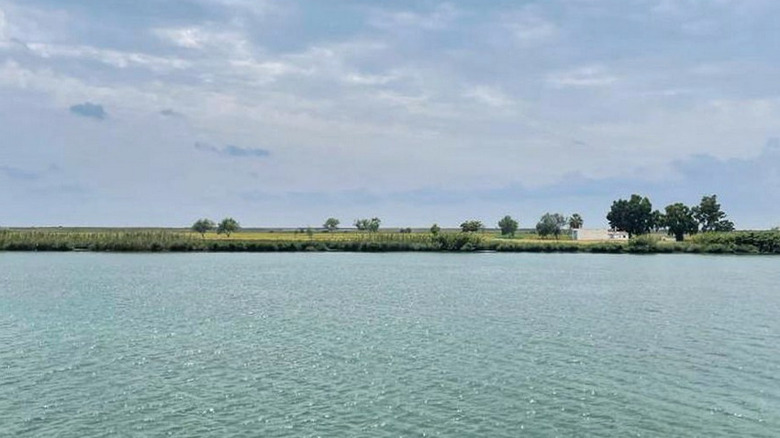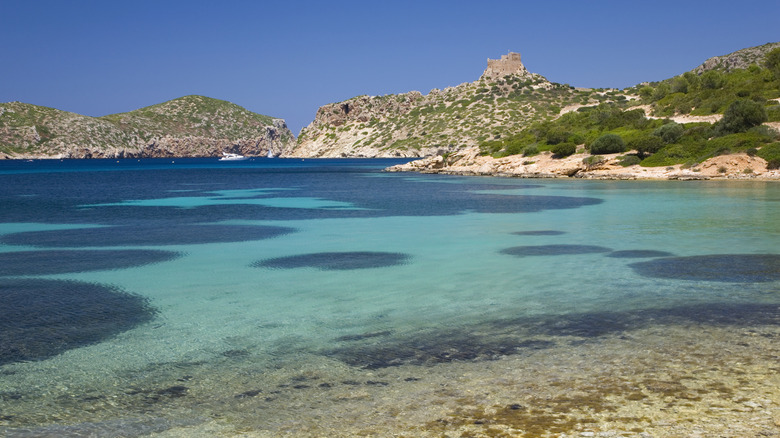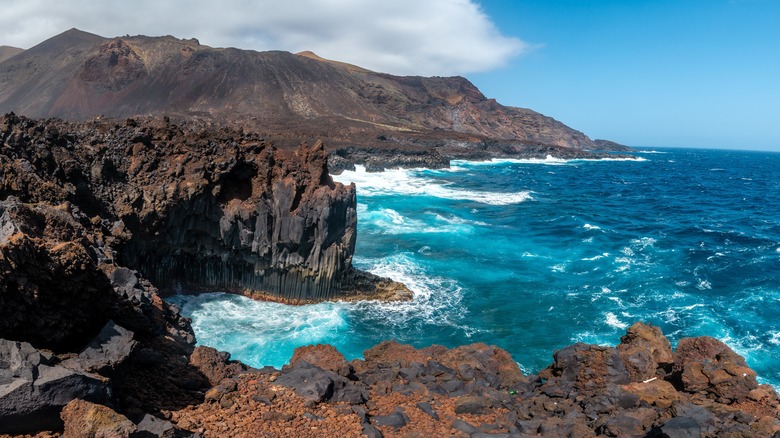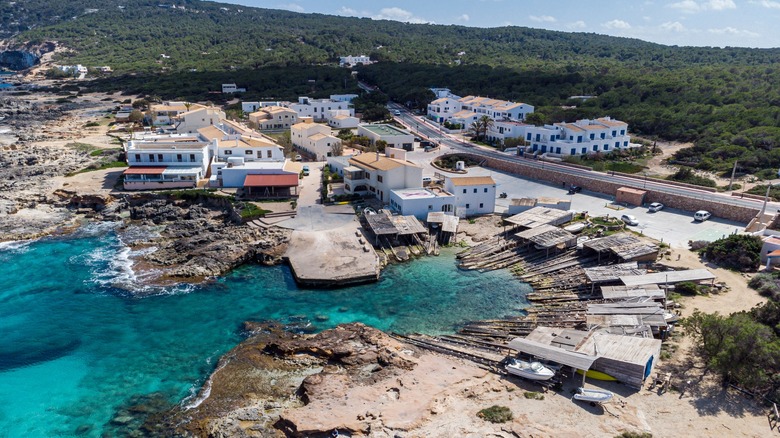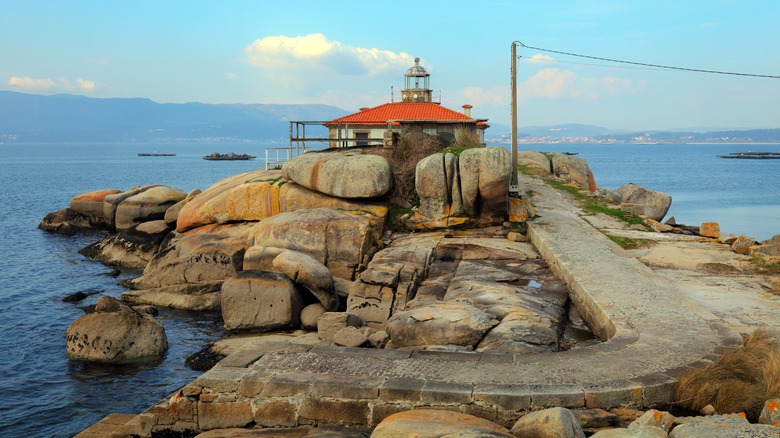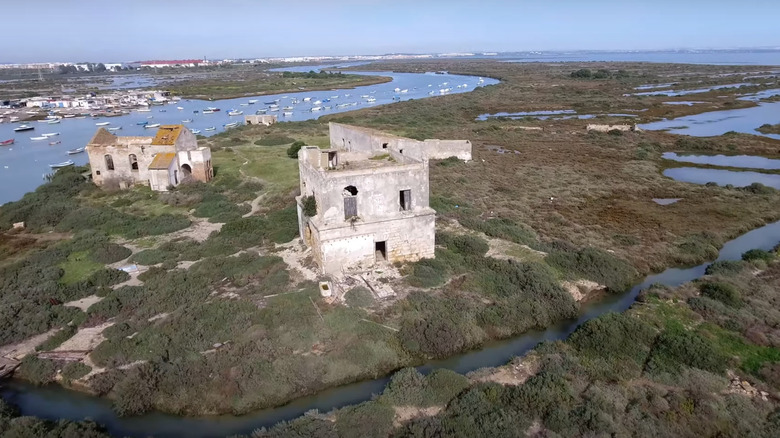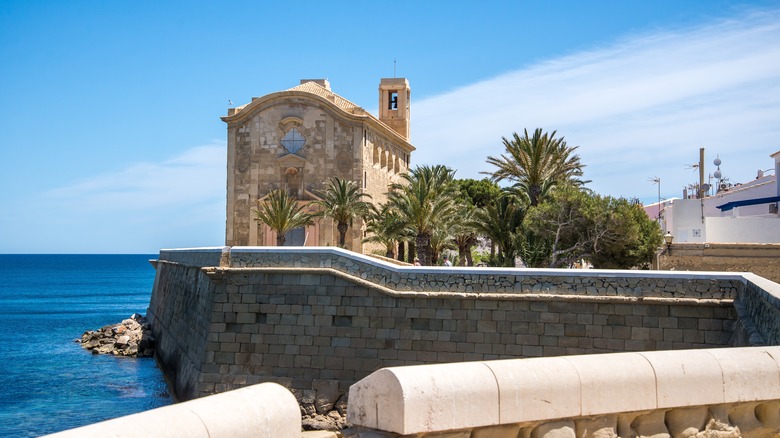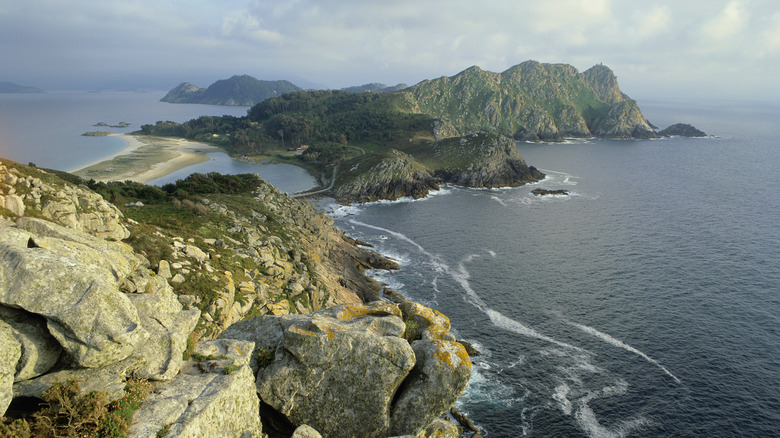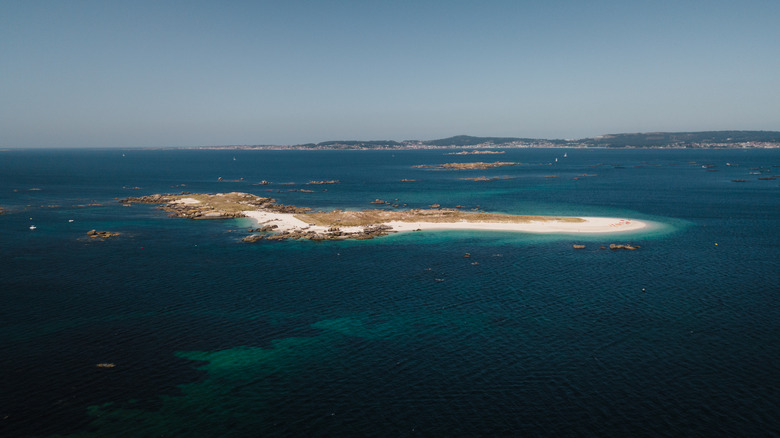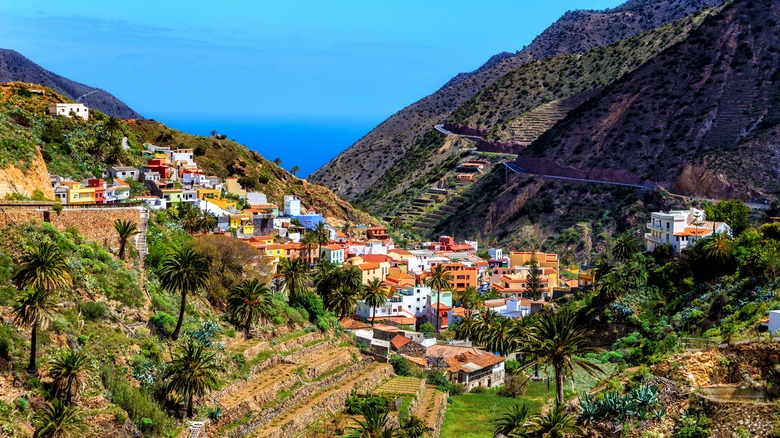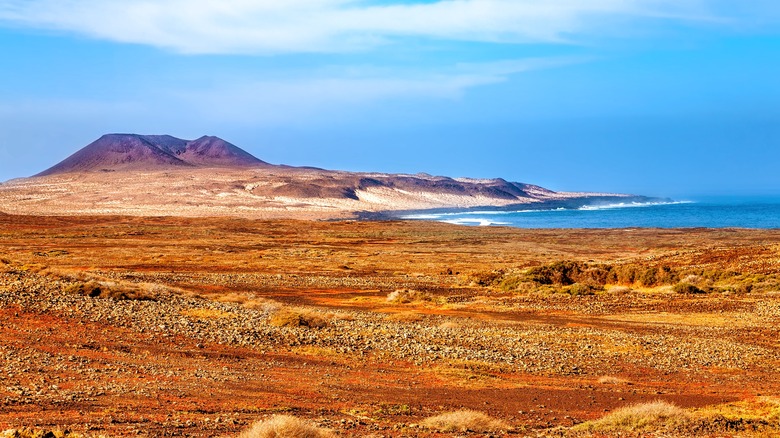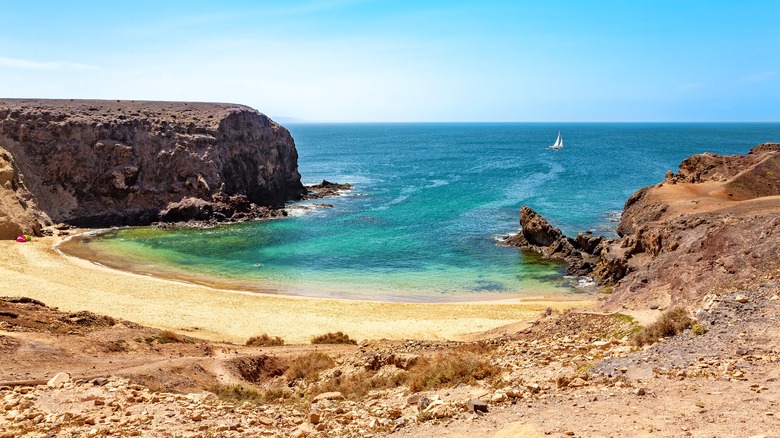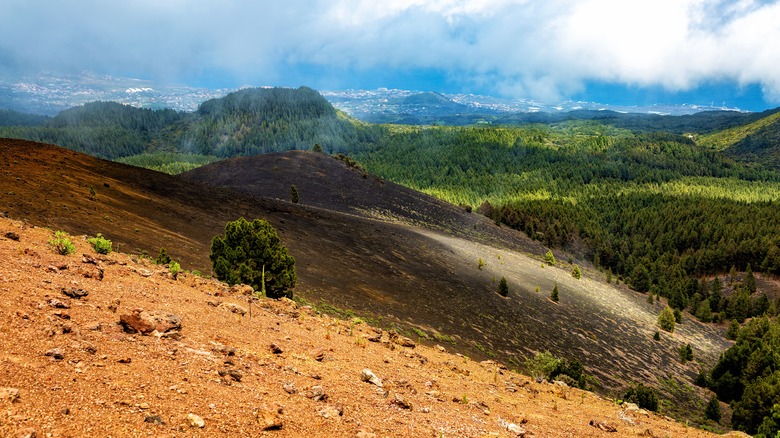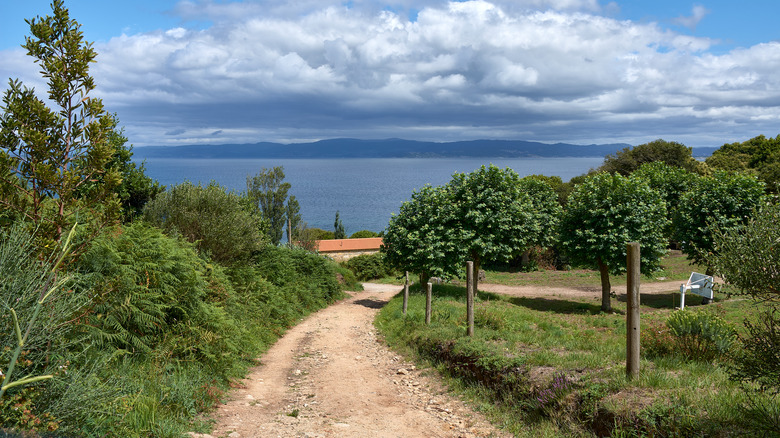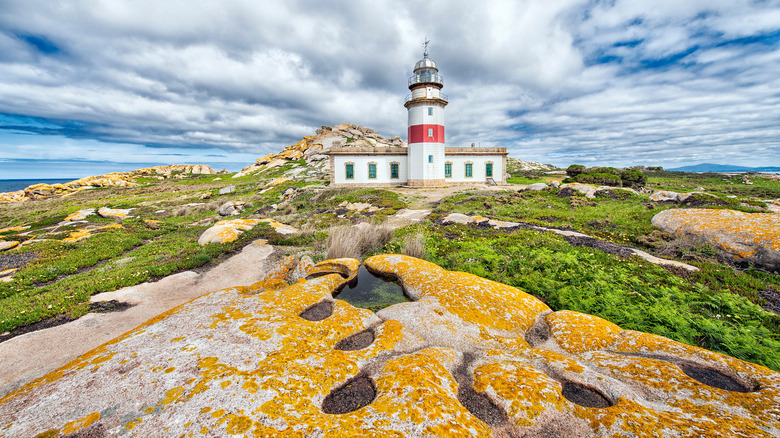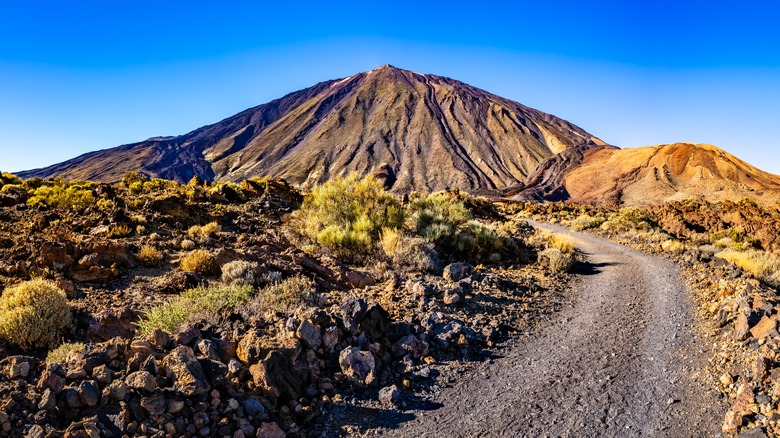The Most Beautiful Islands In Spain You Probably Haven't Heard Of, According To Travelers
For any traveler who likes to be near the sea, visiting one of the must-see European countries, like Spain, is a smart choice. Its coast, shuffling from the Mediterranean Sea to the Atlantic Ocean, extends for about 5,000 miles, curling and curving, cutting in to create a jagged shore. Spain also has 48 islands where people live, with a good chunk of them set within the Balearic archipelago and the Canary Islands chain.
Frequent travelers might be aware of some of these island destinations, like the party hub of Ibiza or Tenerife, the largest of the Canary grouping, which United flies to directly from the U.S. But these aren't the only choices for island lovers seeking a hidden gem in Spain. There are many beautiful spots that remain off the radar, and you might not know of them. We've tracked down a selection of them, using travel sites and blogs, for your next trip to España.
Buda
Buda, an island with mostly undeveloped wetlands, is located in Catalonia, southwest of Barcelona. While Barcelona is a lively and beautiful city and home to a bustling street tourists should avoid eating at, Buda is a study in solitude. Most visitors see this place on a boat trip without stepping foot on the island, like this reviewer on Google: "Beautiful island in the middle of a natural park, it's worth taking a boat and visiting it to observe the fauna." What they'll see from the water — Buda sits in the delta of the River Ebro — is vibrant bird life, with more than 300 species calling the island home.
Rice cultivation is prevalent today as a way to ensure the sea doesn't erode the island. Buda is partly a private island — a family owns half, the rest by the government, but all is steeped in tranquility. Visitors who want to immerse themselves in that serenity are in luck. They can stay on the island at the Masia Illa de Buda, a farmhouse that can accommodate up to 26 guests in 11 bedrooms, split over two floors.
Cabrera
The name that actually belongs to an archipelago, Cabrera, is one hour by boat from Mallorca, a warm-weather European island good for a budget-friendly vacation. The islands within the Cabrera Maritime-Terrestrial National Park are all about peace and quiet. The water is also beautiful, a deep turquoise dotted by yachts and boats that anchor offshore. The islands themselves vary in size, but all are made of limestone and are home to a wealth of flora and fauna. "Declared a national park in 1991, it is [a] highly protected and sensitive area with many rare plants and animals and a long and diverse history," notes the Itiki blog.
Visitors will find scores of endemic species among the large clans of seabirds, including the fly-swallow and unique plants like Balearic St. John's Wort. The island serves as a port for migrating birds, and during certain times of the year, more than 150 species can be spotted here. Under the water, divers can find an equally rich selection of marine creatures.
El Hierro
This is the smallest of the Canary Islands, a chain that sits just off the coast of Northwest Africa, near Morocco. Despite its size, it retains the gorgeous nature the archipelago is known for, a group of islands best explored by boat. "El Hierro is a fantastic small, raw, authentic, and beautiful island, and we really enjoyed it," declares the blog Ella and Geert. "The island is stunningly beautiful, there is so much to see and to do and to relax. The island of El Hierro deserves more attention and visitors. Visitors that can value the beautiful nature, peace and quiet of this amazing island."
The weather is a huge draw for travelers, with constant trade winds ensuring cloudless skies are regular. Hikers will enjoy the variety of trails that pepper El Hierro, passing through plains, mountainous forests, and alongside churning seas. Trails are available for adventurers of all levels. Bathers will find a good range of places to get wet, from coastal beaches to many natural pools, including some set within volcanic rock.
Formentera
"... Formentera is a true gem, although located near the well known party island Ibiza and bigger touristic island Mallorca, offering a whole different vibe," explains the blog Authentic Chic Travel & Lifestyle. This Balearic island has small villages and fine beaches; it sits south of the archipelago, dwarfed by Ibiza and the significantly larger Mallorca. Shaped a little like the head of a goose or duck, Formentera is a place ripe for exploration. There are three villages on the island, small laidback settlements, the antithesis of the rowdy atmosphere that is such a draw to nearby Ibiza.
Great nature also awaits travelers, from lakes and caves to salt pans and forests where the smell of juniper and pine scents the air. For sun seekers, there are plenty of places to lay down, catch some rays, and go for a calming dip, including Es Migjorn, the longest beach on the island, extending for a few miles. A couple of lighthouses on the island add an exciting visual element to a trip there.
Illa de Arousa
Linked to the mainland by a bridge, the island only has about 5,000 residents, fine beaches, and a port where fishing boats rock in the gentle swells. "Illa de Arousa is a small island in the Ría de Arousa, or Arousa Estuary in the Rías Baixas of Galicia Spain," relays the author of the blog Packing Up The Pieces. "Although small, this island offers stretches of white sand beaches, a protected nature park, and a port village filled with charm. While O Grove (a peninsula to the south) nearby attracts more tourists, Illa de Arousa feels more like a lived-in local community." Even with such Lilliputian dimensions, the island promises miles of coast, making it a good spot for a summer jaunt.
Visitors will see fishing boats around the island, especially in the area of Pedraserrada, a jumble of stone homes by the seafront and narrow, winding streets unfurling behind. These boats go by many names, including "dornas," "botes," "nasas," and "gamelas," and are used by locals who catch the seafood cooked at restaurants on the island, especially at the seafront promenade near Xufre port. Nature lovers can spend time wandering around a natural park in the island's south.
Isla del Trocadero
Close to Cádiz and separated by a narrow channel, this island has vibrant bird life and ruins of an old fort. "Trocadero Island, historic place of defense of the Constitution. It should be the pride of the Spanish," declares a reviewer on Google. The island sits in the Bay of Cádiz, within an expanse of marshes known as the Bay of Cádiz Nature Reserve. This reserve is a place that teems with birds, especially aquatic species, some migrating, some resident. These include waders, types of gulls, plovers, terns, and even flamingos.
Other creatures include fish and crustaceans, who find the environment ideal for breeding. The southern part of the island is where to encounter the San Luis Fort, now a shadow of its former self, though the vestiges of its glory days are very much evident. Other historical notes on the isle include urns and jugs that date to the Phoenicians.
Isla de Tabarca
"Tabarca is definitely an island of two halves," notes View from La Vila. "Once you step off the boat at the tiny harbour, you turn right for the inhabited and fortified part. Turn left for the flat open spaces and small rocky coves of the east of the island, where it's possible to get away from the crowds for some great views and some solitude." The island sits a few miles off the coast, 11 miles from Alicante, the nearest major city in Valencia, which is both the name of a region and the underrated foodie city with spacious beaches.
Tabarca boasts an interesting history. For some time, it was a hideout for Berber pirates, leading King Carlos III to secure it in the 1900s. A walled town was created; the walls have been assigned the designation of a Historical and Artistic Site in Spain. Elsewhere on the island, tourists can find beaches that yield clear seas, restaurants that serve the popular, local dish caldero (fish stew), and even a lighthouse.
Islas Cíes
In Spain's northwest, close to the border with Portugal, lies this small chain of islands. They are wild and rugged and part of a maritime park, and the only lodging there is camping. "If you want to discover some of the most beautiful beaches in Spain, then you definitely should visit Islas Cíes ... an idilic destination of white sand beaches, crystal clear waters and astonishing cliffs and sights," writes Miss Wanderitall. Located in the Vigo Estuary, the islands sit within a land-sea park known as the Natural Park of the Atlantic Islands of Galicia.
There are three isles — Monteagudo, Del Medio, and San Martiño — with the first two connected by Rodas Beach, which the British newspaper The Guardian deemed one of the top 10 beaches in the world. For nature lovers, the islands are a paradise come to life, with mountains, coves, cliffs, and walking trails. There are lighthouses to discover, cool rock formations, and even a few simple restaurants, including one that specializes in seafood. Visitors must get prior permission to visit the islands, though this is only necessary during the high season and can be done online.
Illote Guidoiro Areoso
"The Galician Maldives, incredible place! It can be accessed by boat or the most fun thing is by kayak," says a commenter on Google. This islet is a tiny blip in the water, measuring only 114 acres. However, the crystal-clear water and sandy shoreline make it feel like something grand from the Caribbean or a paradisal island nation in the Indian Ocean. The island is located in the estuary of the River Arousa, close to Illa de Arousa.
This place would bring a smile to sun worshippers, with beaches ringing the coast and dunes behind them with no real shade on the island. Stepping foot on the isle is carefully controlled, with three specific windows each day and different permits required depending on the transportation used. Kayakers are limited to 24 per each time slot, although paddlers that don't actually disembark won't need a permit. Once onshore, visitors can enjoy the striking waters and even swim.
La Gomera
Another Canary Island, this one seems like an enchanted land, with mountains, canyons, valleys, moss-covered forests, and dry coasts with great diving opportunities. "La Gomera is in part a lush, green island and is home to one of the largest laurel cloud forests in the world, but it is also arid and dry around the coastline, with cacti and banana palms a regular sight. It is a small island with a lot of wild landscapes," notes the blog The World On My Necklace.
Though strikingly beautiful, La Gomera doesn't have the long shores and picture-perfect sands that entice developers. This works in its favor, allowing it to bask in its unique, natural state, making it an ideal location for sun-seeking tourists. Fans of dramatic beaches should definitely add this place to their bucket list — they'll find compact strands of black sand set between towering cliffs. And the trees of Garajonay National Park look like they were lifted from the pages of The Lord of the Rings.
La Graciosa
A few miles north of Lanzarote, this island has no paved roads for cars and less than 1,000 residents. One of the Canary Islands, it is a place to switch off from the incessant drone of everyday life. "La Graciosa is one of the least visited of Spain's Canary Islands. Peaceful and serene, it's the kind of place you come to relax and unwind," asserts The Discoverer Blog. "From the moment you step off the ferry, it's like turning back time. Mass tourism has yet to reach this place, which has no airport and no paved roads. Instead of big hotels, you'll find guest houses and apartments for rent."
Beaches are among the highlights of a trip to the island, where volcanic terrain provides visitors with powerful panoramas. Fine stretches of sand grace the northern and southern coasts of the isle, while the center has a few small peaks. Development is limited, partly because the entire island is part of the Chinijo Archipelago Natural Park, a large marine park. Four main trails crisscross the island, easily traversed on foot or by bicycle.
Lanzarote
One of the Canary Islands, it's volcanic with red and black sand beaches and striking terrain. The Twirling Traveler described the experience of visiting the island and urged sightseers to learn important Spanish phrases before heading out since it's still a hidden Spanish gem. "Lanzarote is one of the least touristy islands of the Canary Islands and I particularly loved that it felt like I was visiting Spain ... Though Lanzarote is developed very orderly, with brand new roads and beautifully decorated roundabouts, you can still discover areas that you can have completely to yourself."
Travelers can expect a panoply of colors when they wander around the island. This ranges from the black sand on the shore and the deep rust cliffs that rise from turquoise seas to the clear blue skies and the white-washed houses that dot the island's contours. Thanks to its volcanic genesis and areas of lava fields, the island is home to interesting rock formations, like the ghoulish, otherworldly spires of Ciudad Estratificada.
La Palma
"First of all, and what I like most, La Palma is not as touristic as the rest of the islands. The small area and the absence of crazy tourist resorts have their perks. It's the perfect place if you're looking for a bit of peace and quiet," points out the author of Kiss My Backpack. "Second, it's the greenest of the Canary Islands ... It has long hiking trails throughout the mountain range and beautiful green scenery, which the forest lovers will adore." Tourists will encounter a good web of trails on the island, allowing hikers of all abilities to find the appropriate route.
Some rumble atop cliffs by the sea, others wind past ravines, and there are those that bring walkers into the fragrant air of laurel forests. One of the most famous treks is the Route of the Volcanoes, which runs for 11 miles. It slices through lava fields, craters, and along volcanoes, and its highlight is Las Deseadas, a viewpoint that surveys El Hierro, La Gomera, and Tenerife.
Ons
Cliffs and dunes populate this island, and visitor numbers are capped in the summer to ensure it's never overrun. Ons archipelago is part of the Maritime-Terrestrial National Park of the Atlantic Islands of Galicia (along with Islas Cíes and Sálvora). This explains why visitation is limited, with 1,300 people allowed each day during the high season (Easter and mid-May to mid-September). Visitors usually come via public ferries, though private boats are also allowed. Outside the high season, visits to the Ons islands can only be arranged as part of a group with an official guide.
There are two islands in the Ons chain: Ons and the smaller Onza. People still live on Ons, but for travelers, the main appeal might be the natural landscape. This ranges from beaches to dunes to cliffs to marine grottos like Buraco do Inferno, a slash in the rock that drops straight down to the sea. "If you come to Galicia, in the Pontevedra estuary, there is this gem, a natural park with spectacular beaches, incredible views, and hiking trails," writes a contributor on Tripadvisor.
Sálvora
"It is an incredible place where you can enjoy the lighthouse, the castle, and impressive views ... The boat route is incredible, I recommend it," disclosed a poster on Google. Sálvora limits visitation to 250 tourists per day, and guides must accompany groups as a ratio of one guide per 25 tourists. The rocky island, set among smaller islets that are part of its archipelago, is mostly flat, though travelers will find craggy sections of granite rising from the land and clumps of granite that jut out to form headlands.
A lighthouse reminds visitors that this was a treacherous thoroughfare for marine traffic; in fact, a ship, the "Saint Elizabeth," was wrecked here in the early 1920s. The buildings in the northern half of the isle, also the part with the most beaches, recall the days when people once lived on Sálvora. A former factory was turned into a grand home and is the most stately structure on the island.
Methodology
While many of Spain's islands have made a name for themselves globally, we wanted to find some that were both beautiful and maybe a little undiscovered. We started by combing through lists on sites like Viator and Forever Barcelona. We then edited down our choices by removing islands on the well-known tourist circuit or receive direct flights from the United States. To finalize our choices, we sourced direct testimony from blogs and review sites like Google and Tripadvisor from travelers who had been there, unearthing why they think these islands are special and unknown.
